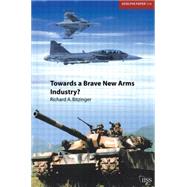Towards a Brave New Arms Industry?
, by Bitzinger,Richard- ISBN: 9780198528357 | 0198528353
- Cover: Nonspecific Binding
- Copyright: 3/31/2003
This book addresses the economic and technological dilemmas and likelyfuture paths facing the second-tier arms-producing states (i.e. the smallerindustrialized countries and the major arms producers in the developing world)as they enter the 21st century. The central argument is that, despite professedgoals of self-sufficiency, most second-tier arms producers have largely failedto eliminate or even substantially reduce their subordination to foreignsuppliers, due to continued deficiencies and weaknesses in these countries'defence technology and production bases. As a result, the capabilities forindependent arms production among most second-tier arms producers have largelyleveled off at a "mid-tech" level. More importantly, given the reducedresources available in the post-Cold War era, even this level of arms productioncapability is increasingly unsustainable.The author then examines the recent readjustment responses on the part ofseveral secondary suppliers and assesses their significance and their prospectsfor success. These readjustment strategies include: (1) rationalizing theirdefence industrial bases, via workforce downsizing, plant closures, and companymergers and acquisitions; (2) exiting from certain kinds of defence work; (3)pursuing defence conversion or commercial diversification; (4) leveragingdual-use technologies; and (5) globalizing their defence industries viaincreased exports or internationalizing production.The author concludes that second-tier arms producers are likely to play asubordinate but more integrated role in an increasingly globalized andinterdependent defence industry. Structurally, such a system could resemble ahuge "hub and spoke" model, comprising a few large first-tier firms operating atthe centre - and providing the process of armaments production with its criticaldesign, development, and systems integration inputs - with lines of outsourcedproduction of niche systems or low-tech items extending out to second-tierstates on the periphery. Although such a global "division of labour" in armsproduction will probably bring new economic and technological benefits to manysecondary states, it will likely entail the abandonment of their originalobjectives of self-sufficiency.







